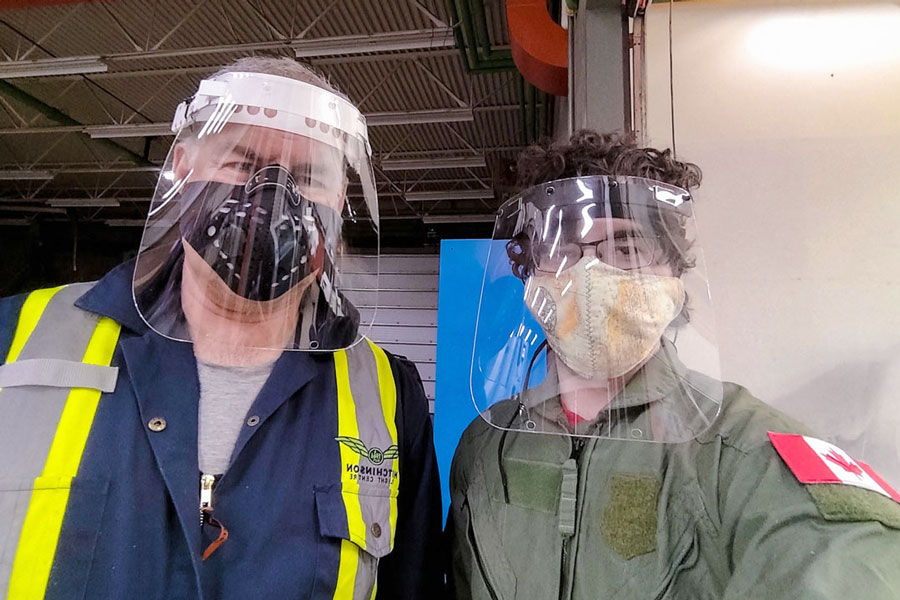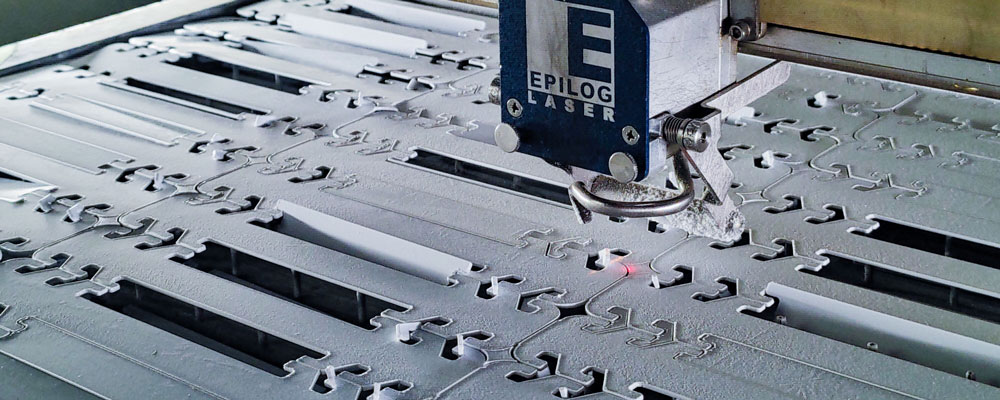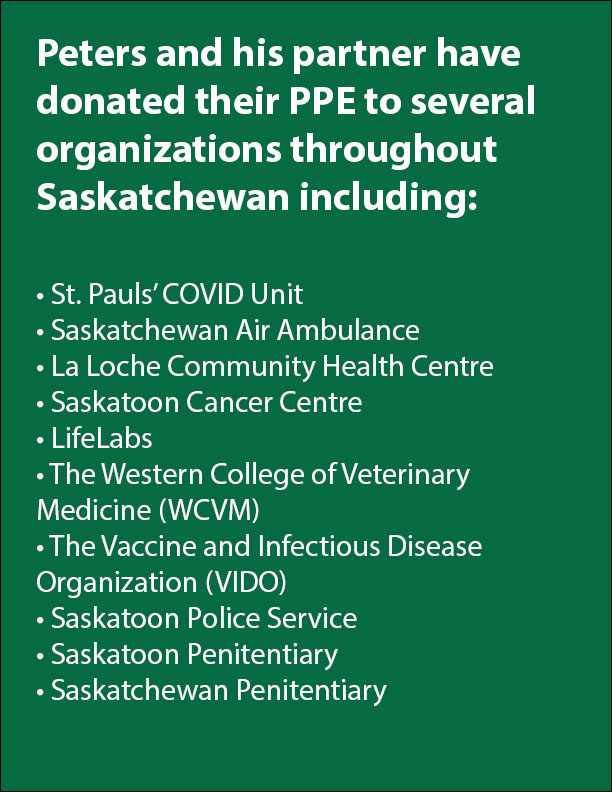
Exceeding the need
Danno Peters (BE’19) put his skills to the ultimate test by developing ear savers and face shields for frontline workers.
By Leslie-Ann SchlosserFor the past four months, Danno Peters has provided 11,000 ear savers and face shields to assist front-line workers combating COVID-19 across western Canada. And he’s doing it all out of the goodness of his heart.
He isn’t superman, although his long list of accomplishments suggest otherwise.
While a student at the College of Engineering, Peters was an all-star in many fields. Notably, he was the president of the USask Space Design Team (USST) from 2017 to 2019, where he gained experience with prototyping and electronic design.

A jack of all engineering trades, he says his most beloved interest is aviation. Today, he’s a professional drone instructor and flight reviewer with Mitchinson Flight Centre in Saskatoon, and Research Assistant at USask’s Institute of Space and Atmospheric Studies on their SuperDARN Radar Project.
A lifelong learner, Peters is still studying at USask to complete his Bachelor of Computer Science dual degree and Mitchinson Flight Centre to complete his commercial pilot’s license. He is also working with the USask’s Physics Department on USask’s first radio telescope, a dual-frequency digital telescope constructed from a repurposed Cold War radar dish.
“I’ve always had a love for aviation. That’s what really got me into drones, I was flying model aircrafts and started mounting cameras on them. From there I got into flying manual quadcopters before all the autonomous drones came on the market – so it was a natural progression for me,” said Peters.
Peters worked hard as a USask student to diversify his knowledge. Today, the sky is literally the limit for the young graduate. When he heard from a fellow USask grad there was a supply need for personal protective equipment (PPE) due to the COVID-19 pandemic, he rolled up his sleeves like he had many times before, and tried to help the best way he knew how.
Lending a hand
When the Saskatchewan Health Authority (SHA) mandated an exclusive mask-on policy for all health-care providers in March 2020, wearing a mask all the time was starting to take a toll on health-care professionals.
Ear savers are often used to clip mask loops together at the back of the head, eliminating some of the irritation masks can cause on the ears. But just like most PPE, these ear savers were in short supply when the pandemic hit.
A conversation with Internal Medicine resident Dr. Dwip Parekh (MD’18), and other friends in the medical field sparked Peters’ interest.
“They were getting these ear savers that were made and donated from the community and they also saw some face shields that were made and printed. But some of the plastics weren’t the correct ones to be using – which means they weren’t safe around alcohol, they weren’t safe with hospital cleansing agents or hot environments, or they would case rashes on the skin,” said Peters.

Parekh emphasizes that these types of instruments were crucial in relieving some of the uncomfortable symptoms that comes with wearing a mask.
“For a couple of hours these basic surgical masks are OK to wear, but once you are wearing them for 12- or 28-hour shifts, the posterior side of the outer ears starts getting irritated and abrasive. It causes headaches and quite a bit of pain and discomfort, which interferes with the focus we need at work,” said Parekh.
Luckily, the insight and skills Peters gained during his time at the USST transferred into making ear savers and face shields. He reached out to 3S Health and the SHA and provided a prototype made with more durable plastic that could withstand cleaning agents, like alcohol and peroxide.
“We looked for alternatives – instead of using 3D printing plastic we went with a polystyrene. It [worked] quite well. It’s less expensive, recyclable, and also you can produce them a lot faster,” said Peters.
From there, he and his boss at Mitchinson Flight Centre got to work.
They made the designs and uploaded them to Peters’ personal website so others could download the blueprint. People began contacting the duo from all around Canada and even in the United States, asking them to produce their design.
Ultimately, their design was 14 times faster to produce, and 29 per cent stronger than the initial design that the National Institute of Health was distributing. Word spread and the demand was great so the pair ended up using the 3D printers and lasers at the USask Engineering labs to meet the demand of incoming orders.
While the demand was great, Peters always insisted they would only cover material costs.
“What we were doing is charging at cost to members of the public, but any medical, emergency services we were donating them for free,” said Peters.
At the beginning of July 2020, Peters had donated 11,000 ear savers and nearly 1,000 designs of his ear savers and face shields have been downloaded from their website.
Hoping to help
“I think the main thing was filling a need. I had seen a lot of people making and distributing these types of items, so I assumed it would be well covered. But when you hear about people using the wrong plastics or not having them well printed – they were failing when people are using them, the masks are falling off and the plastic is causing irritation to the skin, I was just hoping to help out and lend my experience in some way,” said Peters.

Throughout this experience, Peters was never concerned about his bottom line. He says he just wanted to help.
“We definitely didn’t want to take advantage of the pandemic. We’re just making sure they get out to people who need them, until they can get their own supply chain operational.”
Peters also maintains it was a culmination of efforts between many groups to see these designs come to realization. These groups include the 3D Printed Ear Savers Alliance Saskatoon, which has distributed over 3,800 ear savers, and Project Northern Lights, a group of engineers from across Canada producing PPE to aid in the pandemic response.
It’s a sentiment Parekh also holds.
“As we become alumni of [USask], what I find the most glorious is exactly this: A resident physician is able to reach out to a friend who is now an engineer and together we are able to come up with quick, efficient and practical solutions, which are able to help our community as a whole. If that is not what inter-professionalism is about, then I don’t know what it is about,” said Parekh.
Interested in learning more about Peters’ project? Visit his website to learn more.


